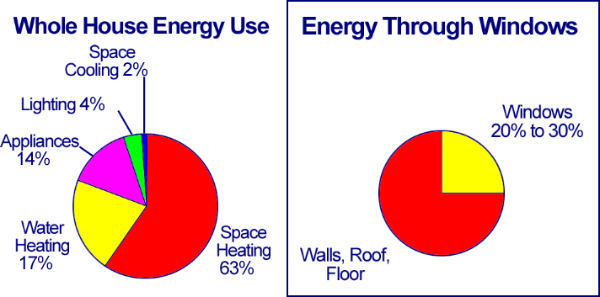The exterior doors, patio doors and skylights of your house affect most of these.
- The space heating and cooling are affected by the outside temperatures and wind speed, the temperature being maintained inside the house, the amount of insulation in the walls, roof, and floor, and the performance of the windows, patio doors, skylights and exterior doors.
- The lighting that you need to add is affected by the number of daylight hours, and the amount of daylight coming in through all glazed units. This depends on their size, number and location throughout the home.
- Humidification and de-humidification are affected by the outside temperature and dryness, the moisture production inside the house, and the relative humidity needed to be comfortable and healthy. Exterior doors can leak the humid air out in winter or can be used to ventilate unwanted humidity especially from the basement. The other aspect of humidity is controlling the condensation on the cold glazed surfaces.
- Ventilation is a comfort and health concern and can be achieved mechanically or naturally through the windows, patio doors, exterior doors and skylights.
Residential energy use in Canada breaks down like this:
- Space heating 63%
- Water heating 17%
- Appliances 14%
- Lighting 4%
- Space cooling 2%

In addition to direct energy costs, choosing Energy Efficiency can affect:
- The size of heating/cooling system. With an improved building envelope you may be able to use a smaller heating and cooling system. This will save money when building or when replacing the old furnace.
- The location of the heating registers. These can be placed along the inside walls rather than the outside, saving ducting, drapery problems, and basement headroom. This can save money when building.
